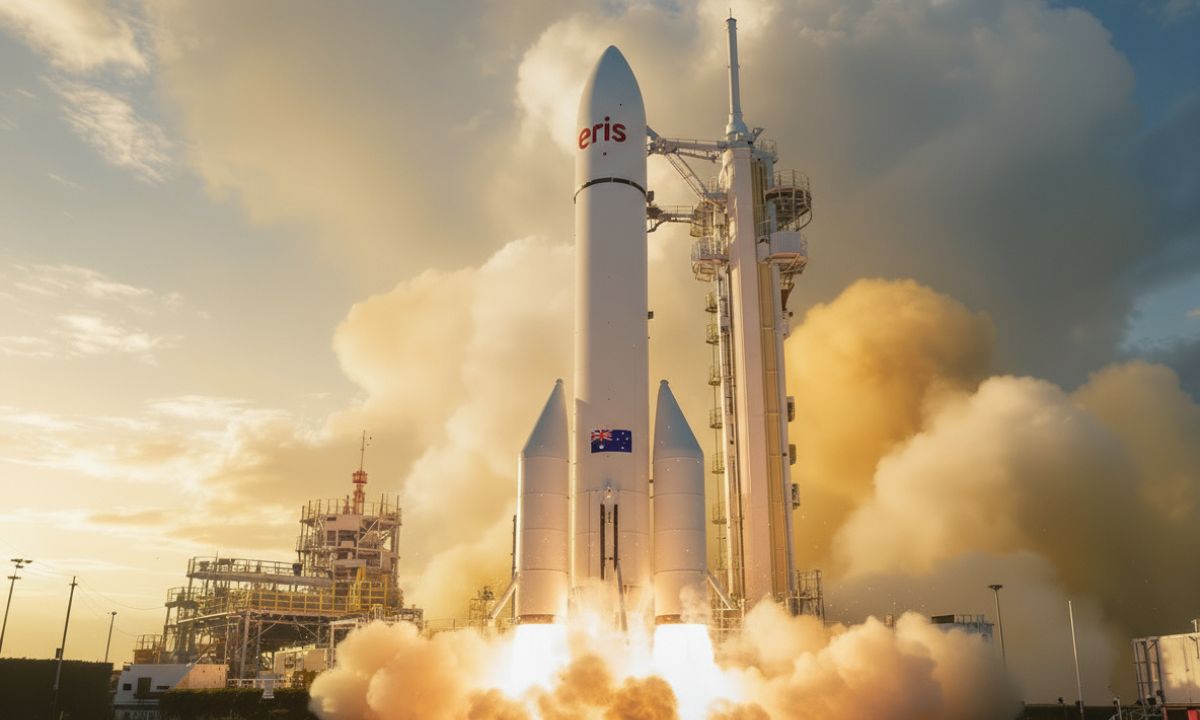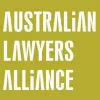Space Industry Safety: Australia's Final Frontier Challenge

On July 30, 2025, Australia made history at the Bowen Orbital Spaceport in coastal Queensland with the Eris rocket. Developed by Gilmour Space Technologies, this rocket represents years of engineering innovation and regulatory navigation.
At 6:35 PM local time there was lift off and, for 14 wonderful seconds, Australia “soared” into the space age.
Then reality hit. The rocket experienced an anomaly and had to make an uncontrolled landing. Fortunately, there were no injuries, no environmental damage and lots of invaluable data was collected.
This perfectly encapsulates the challenge facing Australia's emerging space industry: how can we continue to push the boundaries of innovation while also keeping everyone involved safe?
The Regulatory Landscape Taking Shape
Australia's framework for space safety has been continuously developing over the course of several years. The Space (Launches and Returns) Act 2018 established the foundation, and regulatory assumptions are now being stress tested as the realities of space travel become apparent with launches like the Gilmour’s.
Australia's approach to space safety is unique because it recognises that the sector involves much more than just rockets and satellites, it's about creating an ecosystem in which innovation can thrive within carefully managed risk parameters. The Australian Space Agency actively works with those involved in the industry to continuously evolve safety standards based on real-world operational experience.
Space is inherently complex, which becomes especially apparent when you consider that a single launch requires coordination between multiple agencies. The Australian Space Agency handles space-specific regulations, the Civil Aviation Safety Authority manages airspace issues and the Australian Communications and Media Authority oversees radio spectrum allocation.
For operators at Bowen Orbital Spaceport, this means navigating federal space law, Queensland work health and safety requirements, as well as local environmental regulations.
Queensland's Space Frontier
Queensland's emergence as Australia's space hub should come as no surprise to those familiar with the state’s geography, which has several significant advantages. Coastal launch sites provide safe trajectory paths over water, reducing risks to populated areas, and the Bowen Orbital Spaceport, Australia's first licensed commercial orbital launch facility, is a perfect example.
Geography is only one part of the equation, however. Queensland's regulatory environment has adapted to accommodate the unique needs of the space industry while also maintaining rigorous safety standards, which are crucial for such an inherently dangerous pursuit.
Queensland’s Work Health and Safety Act 2011 applies to all space operations, creating an additional layer of worker protection that complements federal space regulations. Engineers working in Queensland's space sector must operate within multiple regulatory frameworks at the same time.
For example, a rocket fuel system designer must take federal space safety codes, state workplace safety requirements and local environmental protection measures into consideration. This level of complexity is comprehensive risk management in recognition of the fact that space-related activities can impact workers, communities and environments in a myriad of unprecedented ways.
The Defence Connection
The Defence Space Safety Program is an effort by the Australian military to further enhance space safety. The Defence Aviation Safety Authority (DASA) is now the Defence Space Safety Regulator and has planned to release the inaugural set of satellite safety regulations some time in 2025.
This effort is more about harmonising standards than militarising space safety. It allows commanders to use similar safety frameworks whether working within Defence or alongside commercial partners. For commercial operators, this has the potential to streamline processes and reduce regulatory duplication.
The memorandum of understanding between DASA and the Australian Space Agency is a clear signal that the regulatory approach to space-related activities can often serve both civilian and defence purposes. This integration is particularly relevant for facilities like Bowen, where commercial launches can easily serve government customers.
Learning from Real Experience
Gilmour Space's failed launch offers crucial insights into how Australian safety frameworks perform under stress. The company has taken a transparent approach to all their processes, sharing the lessons they learned from their test flight in demonstration of industry maturity that safety regulators need to see.
CEO Adam Gilmour's post-flight comments revealed they have taken the Eris rocket’s 14 second flight in stride: "We've learned a tremendous amount that will go directly into improving our next vehicle, which is already in production." This iterative approach, which celebrates incremental progress while learning from setbacks, is representative of best practices in high-risk technology development.
The safety protocols worked exactly as designed. Despite the uncontrolled landing, no personnel were injured and there was no environmental damage to the surrounding area, while comprehensive exclusion zones, thorough emergency response procedures and a range of risk management protocols demonstrated their effectiveness under real-world conditions.
Ever-evolving Safety Standards
Australia's Flight Safety Code is constantly updated based on the latest operational findings and industry feedback. All proposed changes are a reflection of the maturing understanding of space safety challenges, including improved definitions, updated safety system standards and new collision avoidance requirements.
These updates are made in response to practical challenges which arise during actual operations. The Flight Safety Code's quantitative risk assessment methodology requires launch operators to demonstrate that public risk remains below specific thresholds, with a maximum collective risk of 1 x 10^-4 and individual risk of 1 x 10^-6 per mission.
For engineers and safety professionals working within the space industry, these numbers define the acceptable boundaries of risk that society is willing to accept in exchange for growth. Meeting these standards requires a range of sophisticated modeling, comprehensive hazard identification and robust mitigation strategies.
The Human Factor
Whether it’s the engineers who design propulsion systems or the range safety officers in charge of monitoring launches, human expertise remains the critical factor in space safety. Every safety regulation and technical standard is a representation of the people who make Australia's space industry possible and, most importantly, safe.
Queensland workers who operate within the domain of space travel exist in an environment where traditional workplace safety intersects with the risks that come with cutting-edge technology. For example, the handling of rocket propellant requires expertise with hazardous materials, cryogenic systems demand specialised safety protocols and high-pressure testing environments need confined space safety procedures.
Although the foundation of workplace health and safety frameworks are provided by individual states, the applications to the space industry require specialised training and bespoke procedures. Workers must understand both conventional industrial hazards as well as the unique risks associated with rocket propulsion, satellite systems and space-qualified materials.
Environmental Stewardship
Space safety extends beyond immediate operational risks into considerations for long-term environmental hazards. All of Australia's space activities must be able to demonstrate environmental responsibility, particularly given Queensland's proximity to the Great Barrier Reef.
The Bowen facility's location was specifically chosen because it ensures rocket drop zones fall outside the World Heritage Area, showing how environmental protection influences the development of the space industry from day one of the planning stages.
Avoiding space debris is another crucial environmental consideration. Australia follows international guidelines for limiting the release of debris during normal operations and preventing the intentional destruction of objects in space. These requirements reflect the growing thought that space itself is an environment which requires protection.
Also read: Eyes in the Sky: How Satellite Technology is About to Transform Queensland Road Safety Forever
Looking Forward: Emerging Challenges
The space industry faces an array of ever-evolving safety challenges which must be accommodated by the current Australian frameworks. The increasing frequency of commercial launches, growing complexity of missions and expanding range of technologies all require adaptable regulatory approaches.
The impact of climate change also presents new considerations for launch operations. Extreme weather events such as the tropical cyclones that have affected Gilmour's launch schedule could become more frequent or severe. Launch facilities on coastal locations must improve their weather risk management protocols and protective measures in response.
Space traffic management will also become increasingly critical as the amount of satellites in orbit continues to grow. Australia's participation in international space situational awareness networks, as well as the development of comprehensive collision avoidance requirements, reflects the recognition of this challenge.
The advent of space tourism will also require specialised safety standards. While current regulations focus on commercial satellite launches, the growing international space tourism market could necessitate new safety frameworks for passenger-carrying spacecraft.
Practical Implications for Industry

For the engineers, safety regulators and policymakers who work in the Australian space sector, several key considerations emerge from our current experience of this emerging industry:
Regulatory coordination is essential. Space activities require the navigation of multiple regulatory frameworks at the same time. Engaging as early as possible with all relevant agencies streamlines approval processes and ensures full compliance.
Transparent communication builds trust. Gilmour Space's open approach to sharing test results and the lessons they learn along the way is a demonstration of industry maturity that is important for both regulators and communities alike to see. This transparency is a crucial part of continued social license in the development of the space industry.
Iterative development is the norm. Advances in space technology occur through systematic testing and refinement. It’s vital that safety frameworks accommodate this iterative approach while maintaining rigorous risk management standards.
International alignment matters. Australia's safety standards are in alignment with the leading space-faring nations. This is to facilitate international cooperation and the sharing of technology transfer while upholding appropriate local considerations.
Building Tomorrow's Framework
The challenges facing Australian space safety isn't just about managing current risks, it's about building frameworks that can evolve with rapidly advancing technology while maintaining public confidence and ensuring environmental protection.
The Bowen experience demonstrates both the effectiveness of current safety approaches and opportunities for continued improvement. As launch frequency increases and mission complexity grows, safety systems must scale accordingly while maintaining rigorous standards which protect workers, communities and environments.
When it comes to space safety, success isn't measured by the absence of failures, it's demonstrated by the ability to manage risks effectively, learn from experience and continuously improve safety systems. The Australian approach is grounded in comprehensive regulation, widespread industry collaboration and transparent communication to provide a strong foundation for meeting the safety challenges of our final frontier.
If it's time to talk, we're here to help. Get free advice direct from our solicitors today.





